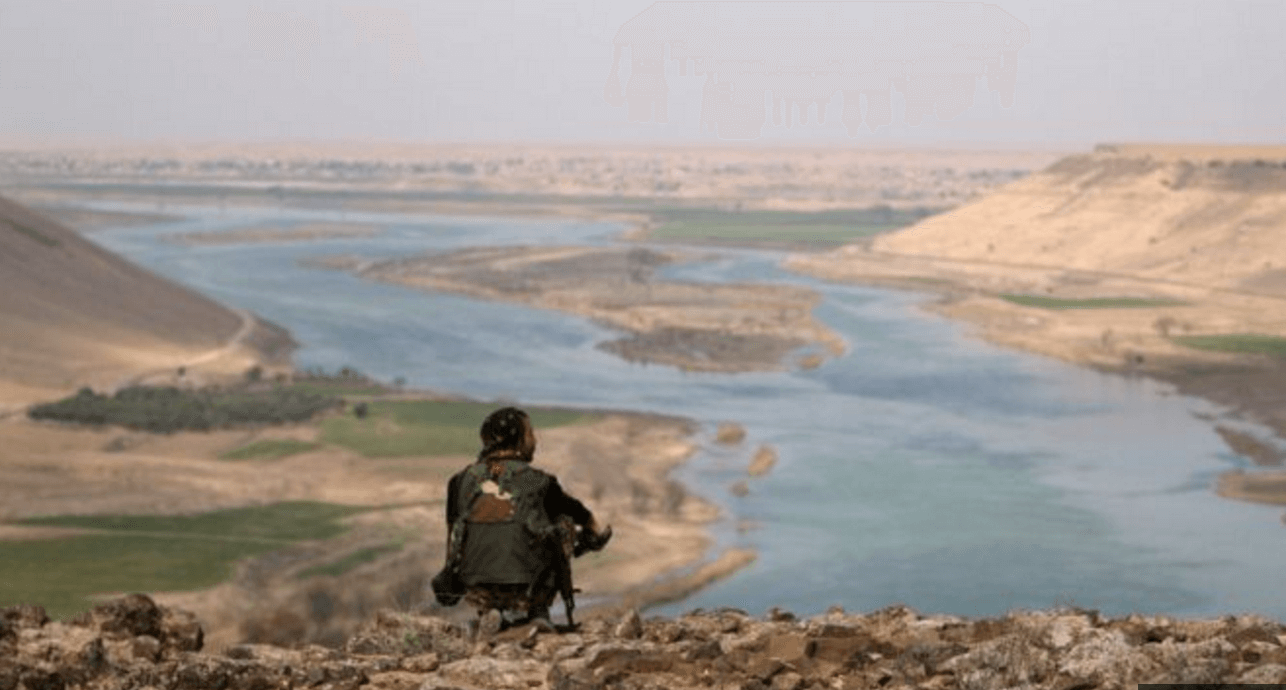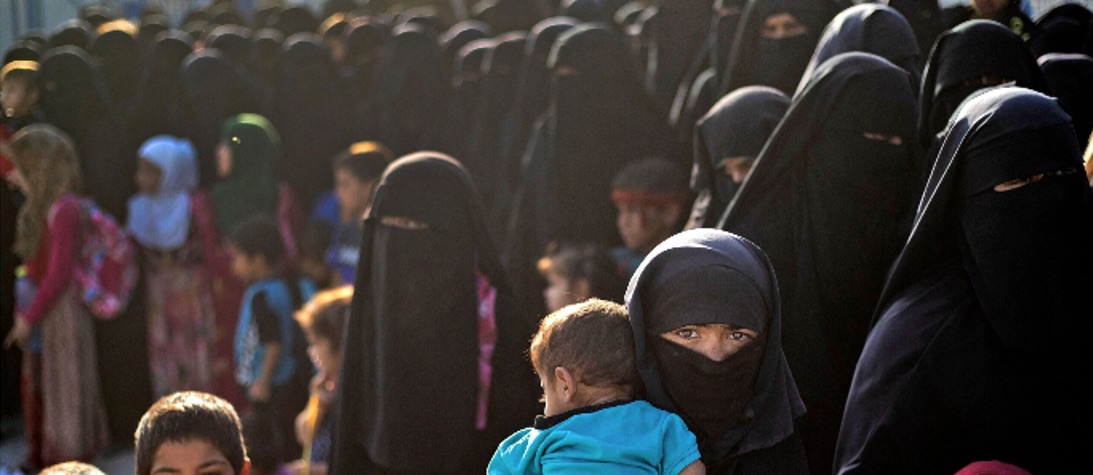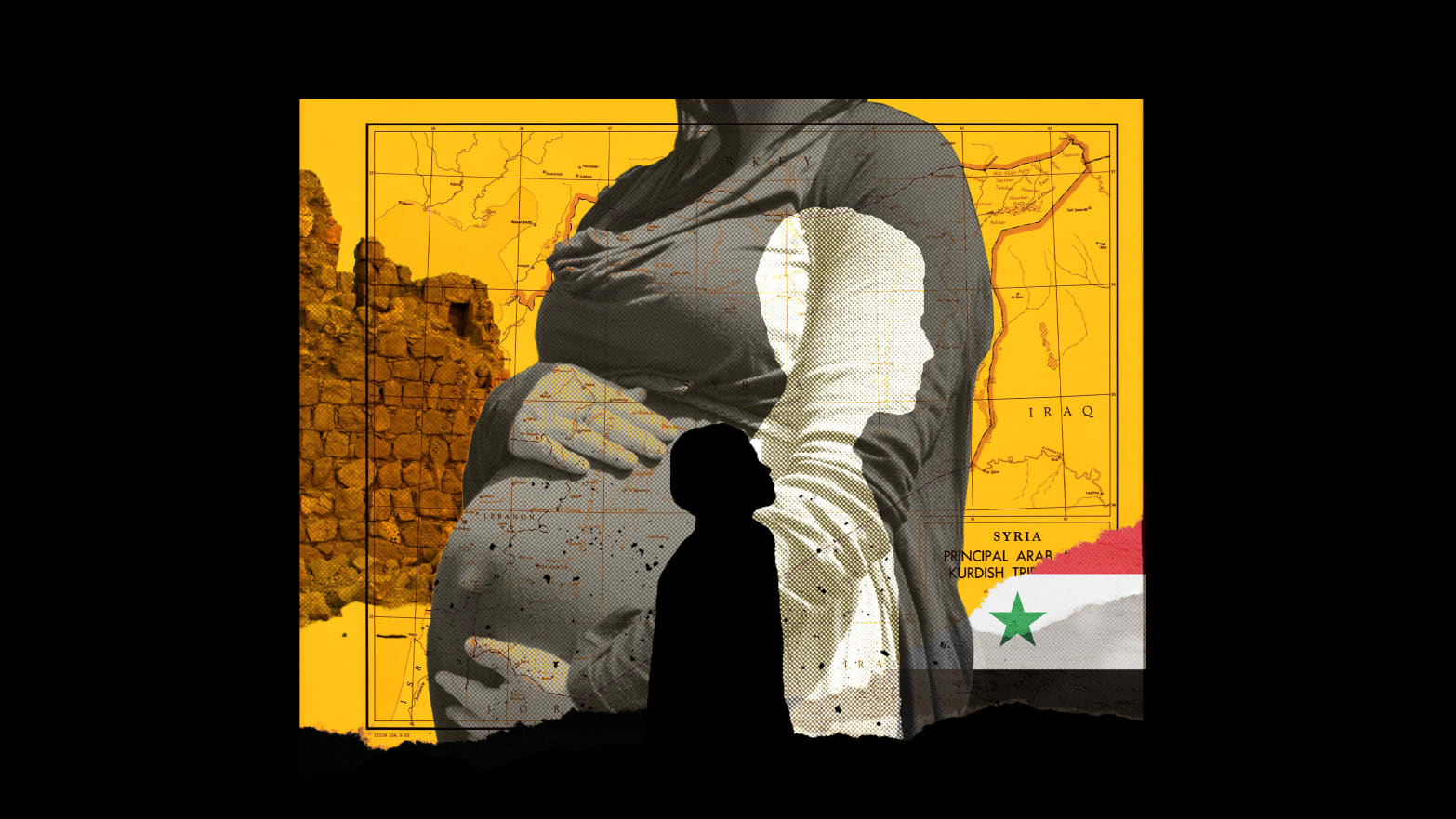Mona Thakkar & Anne Speckhard Despite notable repatriation progress in early 2023, involving 14 countries…

Why Taking the Tabqa Dam is Important in the Fight against ISIS and Retaking of Raqqa
by Asaad H. Almohammad, Ph.D. & Anne Speckhard, Ph.D.
This week U.S. Colonel Joseph E. Scrocca, a coalition public affairs officer and spokesman for the American-led command, declared from Baghdad that the Tabqa Dam (a.k.a., al-Thawra or Euphrates Dam) and the areas in close vicinity were “critical for the isolation of Raqqa and the next step toward an annihilation of ISIS in Syria.” Similarly, many were taken by surprise when the Syrian Democratic Forces (SDF), backed and supported by American forces, began a major offensive to retake the Tabqa Dam. Meanwhile ISIS claimed on its social media channels that the Tabqa Dam, located about 40 km north of Raqqa, was damaged by coalition airstrikes amidst dangerously high water levels creating a danger of collapse and imminent flooding—a claim the U.S. military flatly refutes.[i] On March 30th, 2017 the SDF managed to send engineers in to open floodgates on the dam to release pressure although they did so while being shelled from ISIS.[ii]
For the last month we’ve been conducting investigative research on ISIS security forces. During the course of our investigation we have come across chatter and vetted some information from trusted sources on the ground in Syria about the Tabqa Dam. After news on the offensive broke, we asked our sources to gather and report more information on the operational significance of the dam. After a month-long investigation, a number of justifications for the selection of the dam to be the first target of the SDF and American forces were identified.
Electricity and Finance
Our research uncovered that during the first half of 2016 the dam supplied the governorate of Raqqah with 4 hours of electricity per day. During that period the lion’s share of power generated from the dam was sold to areas controlled by the Syrian regime, thus making the Syrian government the main purchaser of electricity generated by the dam. It is noteworthy that fees were collected in USD from agents of the Syrian regime by ISIS agents for the supplied electric power. This is not the first time that ISIS has been engaged in devil’s deals with the Syrian regime which it voraciously claims as it’s sworn enemy—yet ISIS has also sold oil to the Syrian regime and Syrian engineers have appeared in ISIS territory to repair oil pipelines and technology.[iii]
With around 20 hours per day of electricity shortages, ISIS agreed to allow local civilians to run generators. That decision lined up with ISIS’s financial risk aversion strategy, which can be observed in areas such as oil and gas. During the first half of 2016, just over 60 generators were operational inside the city of Raqqah. The generators are type 113, which indicates their strong operational capacity. During that period, local civilians had to rely on these generators for electricity. There were two packages: 1 and 10 Ampere. The package most frequently purchased by poorer civilians, 1 Ampere, was the minimum required for basic lighting. Those who could afford it bought 10 Ampere.
The aforementioned generators were allowed by ISIS to be owned and managed by local civilians on the condition that they buy their fuel from ISIS. The generators operate on mazut, a law quality fuel oil (a precursor of diesel fuel), and each generator consumes a barrel of mazut per day. ISIS charges USD $75 per barrel of mazut, enabling ISIS’s fuel directorate to generate at least USD $135,000 per month. On top of that ISIS charged those selling this electricity 11 % of their net profit. It is noteworthy that the previous calculation only taps the value of fuel that is sold to owners of generators operating within the city of Raqqah. At the time, it was estimated that the number of generators operating within ISIS-held territories to be at least three times higher. That means at least 180 generators.
By the second half of the year 2016, the electricity situation changed. The power supply to Raqqah governorate increased to an average of 15 to 20 hours per day. The aforementioned figures suggest that during the second half of 2016, the power supply to the governorate of Raqqah was the best it had been since 2006. Sources reported that ISIS shifted the electric power supply to Raqqah governorate because the Syrian regime didn’t pay their bills to compensate for their supplied electricity so they were cut off. However, during the early months of the first half 2016, the Syrian regime paid the salaries of the dam employees, again indicating the complicity that has existed when necessary between these sworn enemies.
The increased supply of electricity in the second half of 2016 directly corresponded to ISIS’s assigning the directorate of public services the task of collecting utility fees. Moreover, ISIS started compensating experts and technicians working at the dam. Sources added that shortly before March 2017 ISIS had purchased replacement parts required to repair damage to the power grid in Raqqah governorate. It is noteworthy that during the second half of 2016, ISIS increasingly enforced a fiscal policy that made their issued currency the only accepted currency to pay fines and taxes. To that effect, it is observed that ISIS’s policy moved from risk-averse to high-risk regarding power supply.
Data obtained from sources in Raqqah suggest that ISIS’s shift towards a more risky form of investment in public infrastructure payed off. Our investigation uncovered around 482,700 households registered as electricity subscribers in the governorate of Raqqah during a time when ISIS only accepted fees in the form of its self-issued ‘Islamic dinar.’ ISIS sets the value of its currency. 1 ‘Islamic dinar’ equated to around 1,320 (Syrian Pound) SYP. In the months prior to the offensive to retake the Tabqa Dam from ISIS, the average fees for power per household were between 9,500 and 10,500 SYP. These numbers indicate that ISIS collects between USD $21,395,278 and $23,647,412 on average per month from utility subscribers. These figures alone make the dam a strategic target in the fight against ISIS, to cut smash them on the financial front.
Furthermore, a number of sources reported other financial activities that took a place within the facilities of the Tabqa Dam. A key player of ISIS’s financial directorate operated from the dam during the first half of 2016. During that time al-Habari Oil Field, close to Resafa, Raqqah, was operational. Around 3,200 barrels of crude oil were extracted from the field every 2 days. It is noteworthy that ISIS sold the oil prior to its extraction. Payment from those buying crude oil from ISIS was made at the administrative facilities of the dam. Within Resafa, Raqqah, oil extracted from al-Habari Oil field was shipped to an oil refinery. Refineries are commonly owned and managed by locals who have obtained permission to operate from ISIS. Buyers of the oil sell it to the refinery, pay for the refining services, or sell to other traders. In any case, those owning the refinery have to pay a tax to ISIS, around 12 %, of their monthly revenue. This and related taxes are paid to the agent of ISIS’s directorate of finance in the administrative facilities of the Tabqa Dam. On the same day the taxes are collected, representatives of ISIS directorate of finance move the money to Raqqah city.
Other evidence hints to financial activities that take place within the administrative facilities of the Tabqa Dam. During late June, ISIS ordered the arrest of a security operative known by the alias Abu Hajir for embezzling USD $150,000. He worked at the dam facilities.
These two financial activities are evidence of the financial significance of the Tabqa Dam. The dam, in part, served as a taxation department. Foremost however, it generated massive revenue for the group. Those two key functions might have played a major role in justifying the operation to retake the dam from ISIS.
Military Hot Targets
Notwithstanding the financial aspects, which may have impelled the U.S. and its Syrian allies to cooperate on an unprecedented level in the effort to retake the dam, our investigation showed other potential justifications for the operation. We managed to obtain data that uncovered a key player in ISIS (see our forthcoming investigative piece on ISIS security forces and its leadership) who has used the dam as his operational base. From his office within the administrative facilities of the Tabqa Dam, this ISIS leader came to establish ISIS’s security forces (a.k.a., Al-Amnyah, Nukta 11 [Point 11 in English]), raid/death squads, the Caucasian squads, the Islamic police, the military police, and ISIS’s Special Operations office. Within a year of joining the ranks of ISIS, he also became the Wali of Raqqah. Under the umbrella of the security forces, ISIS leadership oversees all attacks within its controlled territories and abroad.
Moreover, the raid/death squads’ central command was within Raqqa governorate. Raid/death squads are unique in the sense that they don’t need to get the permission of the Shariah judge, a typical requirement, to conduct operations, carry out arrests, or eliminate targets, be they what ISIS has labelled as “enemy fighters”, “civilians”, or “ISIS members”. For a long period the whereabouts of their bases were unknown. As of mid-March 2017, one of their bases was uncovered. This base was located at the administrative facilities of the Tabqa Dam.
Additionally, data obtained from multiple sources revealed that within Tabqa Dam, ISIS’s security forces managed a detention center. That detention center was designated to imprison those accused of threating the security of ISIS. High profile figures were detained at this centre. Sources confirmed the presence of foreign detainees. ISIS defectors also told us of training camps near the Tabqa Dam and that prisoners from the dam area were brought for graduates of ISIS shariah training to execute as they made their bayats to ISIS.[iv]
To that effect, it has been demonstrated that the factors described above present overwhelming justification to label the dam as a significant military target for the U.S. and its Syrian Allies. Based on our research, the dam has hosted intelligence, militant, and detention centers, making it an extremely hot military target. However, it also functions as a type of shield; if it is attacked, then many civilians could be harmed by immediate flooding, thus providing a deterrent to targeting the centers located within.
Other Considerations
After the offensive on the dam, some of our sources were contacted to gather data of potential importance. Multiple sources confirmed that, during January 2017, ISIS withdrew its forces from a number of locations around Tabqa and in its immediate vicinity. The data also uncovered that ISIS’s security forces led an operation to publically humiliate tribal leaders within the aforementioned region. Those tribal leaders were detained at the dam and blackmailed into giving a public pledge of allegiance to ISIS and its self-declared Caliph. The purpose of that operation was to enroll the members of these tribes into the fighting forces on the front lines. It is clear that ISIS fears the advancement of Kurdish-led forces in that region.
Moreover, the Tabqa dam and city present an opportunity for the Syrian regime, backed by Hezbollah and Russian forces, to gain more ground. The dam itself is Russian made and could be symbolic in this context. It has been a common practice of the Syrian regime to carry out offensives against forces in areas liberated from ISIS and other extremists (e.g., Al-Nusra Front [a.k.a., Jabhat al-Nusra or Jabhat Fateh al-Sham]).
Lastly, the SDF is largely made of People’s Protection Units (YPG). Amnesty International accused the group of human rights violations in February 2015 and the group is very unpopular in the majority Arab governorate. The YPG has ties to the Kurdistan Workers’ Party (PKK), a designated terrorist organisation by the U.S. and EU, making Turkey very uncomfortable. Local and Turkish reaction to the YPG growing influence would be damaging if the SDF and U.S. forces manage to move against the dam and ultimately retake Raqqa. Nothing in this conflict is simple or straightforward, nor are there any easy answers on how to proceed.
Asaad H. Almohammad, Ph.D. is a Syrian research fellow and novelist. He completed his doctorate in Political Psychology and Marketing. His academic work addressed how psycho-political factors alter implicit and explicit emotional responses and to what levels these responses are predictive of political behavior. He has also spent several years coordinating and working on projects across ISIS-held territories. To date he has addressed a number of financial, operational, and militant activities of the terrorist organization. He is also interested in political branding, campaigns and propaganda, post-conflict reconciliation, and deradicalization. In his spare time Asaad closely follows political affairs, especially humanitarian crises and electoral campaigns. He is especially interested in immigration issues. @Asaadh84
Anne Speckhard, Ph.D. is Adjunct Associate Professor of Psychiatry at Georgetown University in the School of Medicine and Director of the International Center for the Study of Violent Extremism (ICSVE). She is the author of Talking to Terrorists, Bride of ISIS and coauthor of ISIS Defectors: Inside Stories of the Terrorist Caliphate; Undercover Jihadi; and Warrior Princess. Dr. Speckhard has interviewed nearly 500 terrorists, their family members and supporters in various parts of the world including Gaza, West Bank, Chechnya, Iraq, Jordan, Turkey and many countries in Europe. In 2007, she was responsible for designing the psychological and Islamic challenge aspects of the Detainee Rehabilitation Program in Iraq to be applied to 20,000 + detainees and 800 juveniles. She is a sought after counter-terrorism experts and has consulted to NATO, OSCE, foreign governments and to the U.S. Senate & House, Departments of State, Defense, Justice, Homeland Security, Health & Human Services, CIA and FBI and CNN, BBC, NPR, Fox News, MSNBC, CTV, and in Time, The New York Times, The Washington Post, London Times and many other publications. @AnneSpeckkhard Her other publications are found here: https://georgetown.academia.edu/AnneSpeckhard Website: https://www.icsve.org
Reference for this article: Almohammad, Asaad & Speckhard, Anne (March 29, 2017) Why Taking the Tabqa Dam is Important in the Fight against ISIS and Retaking of Raqqa. ICSVE Brief Reports
[i] NBC News. (March 27, 2017). ISIS, U.S.-Backed Forces Battle Over Syria’s Tabqa Dam. http://www.nbcnews.com/storyline/isis-terror/isis-u-s-backed-forces-battle-over-syria-s-tabqa-n738816 Retrieved from http://www.nbcnews.com/storyline/isis-terror/isis-u-s-backed-forces-battle-over-syria-s-tabqa-n738816
[ii] Rudaw. (March 30, 2017). Engineers open Tabqa dam spillway, come under ISIS mortar fire. Rudaw. Retrieved from http://www.rudaw.net/english/middleeast/syria/290320171
[iii] Speckhard, A., & Yayla, A. S. (2016). ISIS Defectors: Inside Stories of the Terrorist Caliphate: Advances Press, LLC. And Speckhard, A. (April 27, 2016). ISIS revenues include sales of oil to the al-Assad regime. ICSVE Brief Reports. Retrieved from https://www.icsve.org/brief-reports/isiss-revenues-include-sales-of-oil-to-the-al-assad-regime/
[iv] Speckhard, A., & Yayla, A. S. (2016). ISIS Defectors: Inside Stories of the Terrorist Caliphate: Advances Press, LLC.



